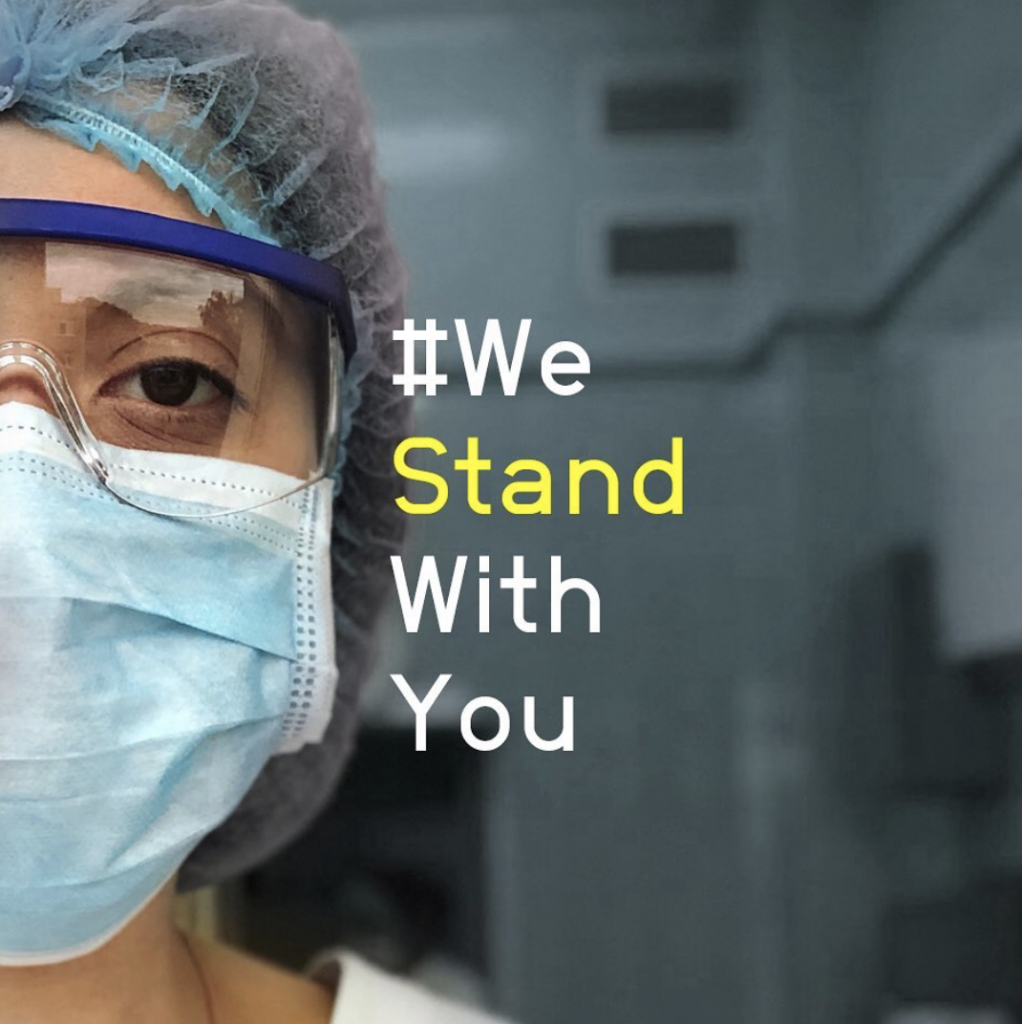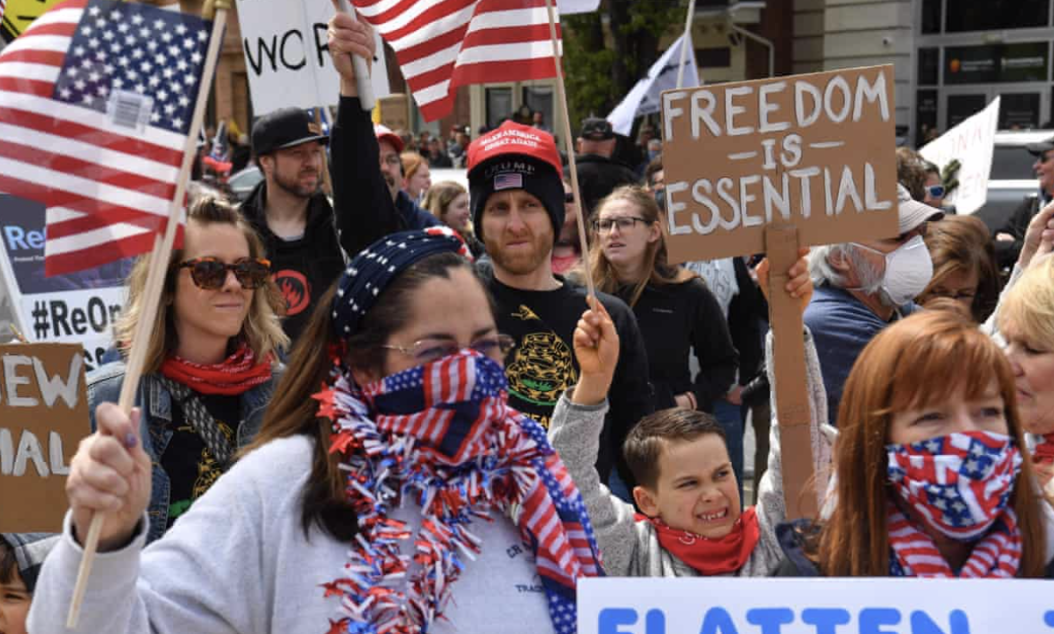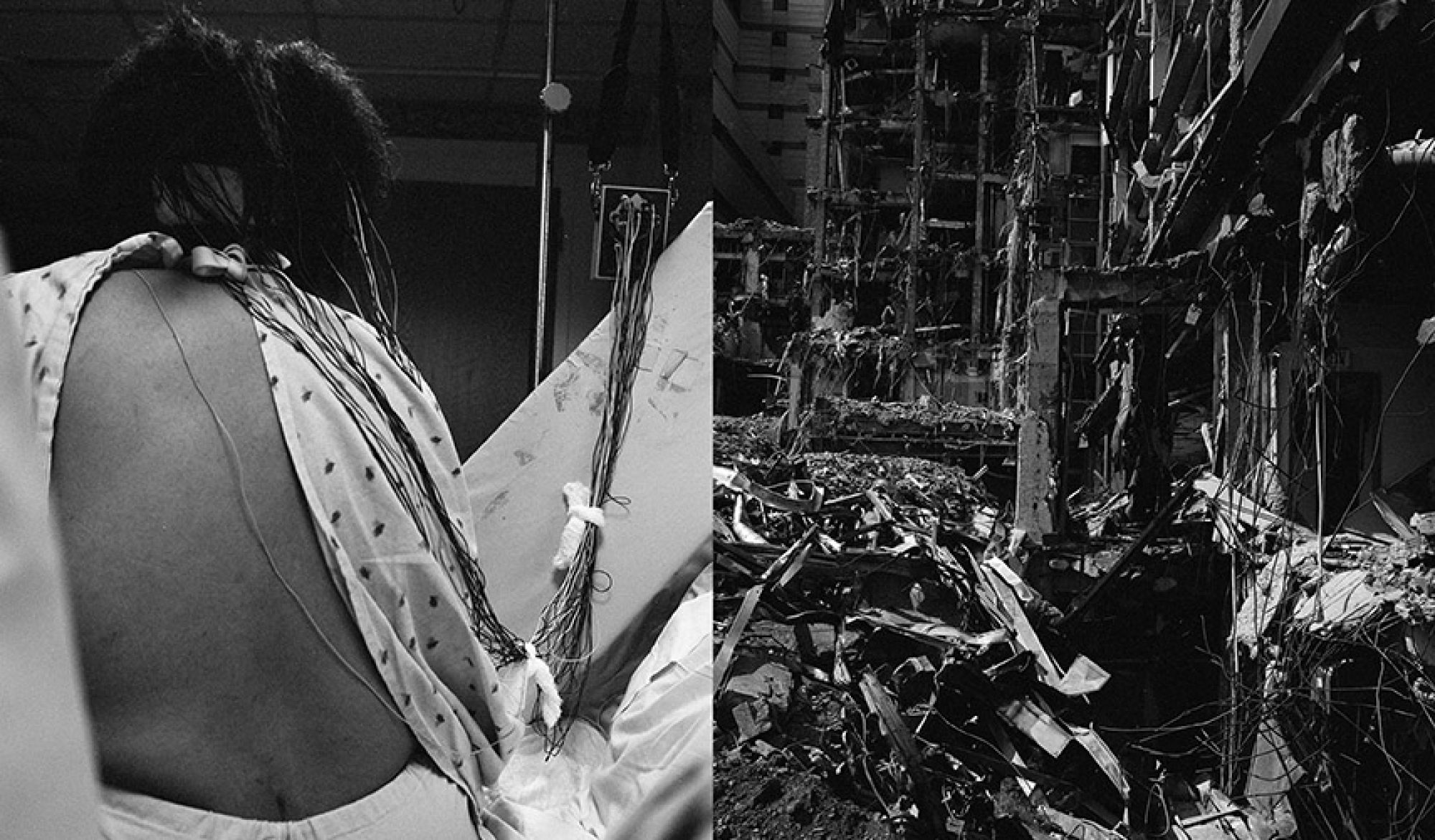Nathalie Jimenez ’20
This project explores how we can redefine caregiving during a pandemic with a special eye on how human presence and relationality are recast.
Caregiving
A caregiver is defined as a person who provides direct care to another person but we have seen caregiving during this pandemic differently. Caregiving has not been about one person caring for another, but rather about the care medical professionals give to patients, the care people give to medical professionals, the care members of the community give one another and the care government gives its citizens.
This pandemic has highlighted the inequalities of caregiving and how some receive more care than others. Redefining caregiving is the first step to stopping this inequality.
Medical Professionals and Their Patients

Medical professionals’ care for their patients during the COVID-19 pandemic has been exceptionally remarkable. Medical professionals are working tirelessly to care for their patients even if they don’t have the adequate protective gear to do the job. As a surgeon in Fresno, Calif., accurately put it, “We are at war with no ammo”[1]. Medical professionals have put their own health at risk to help others more than ever before. Over 1000 medical professionals have died from COVID-19 complications around the world and many more are expected to die [2]. Yet medical professionals are still doing their job to keep everyone else healthy even though they should not be working in the conditions they’re working in.
Care for Medical Professionals

Many companies have started giving back to medical professionals for all the great work they do. Companies have been donating food, beverages, shoes and more to medical professionals and first responders as well [3]. The best way to care for our medical professionals is to give them the gear they need to stay safe and healthy. However, most civilians are not able to give back with material possessions. The way we can give back is by staying at home and slowing down the spread of COVID-19.
Community Members Care for One Another

The community has the power to stop the spread of COVID-19. Members of the community can help one another by having simple hygiene, social distancing, stopping all the hoarding, and asking to do groceries for your elderly neighbors. By staying at home or social distancing we can slow the spread of COVID-19 and save countless lives. Social distancing and staying at home has become increasingly difficult for many and there have been protests across the United States. From Michigan to California, many people are eager to reopen even if CDC guidelines for reopening have not been met. It’s becoming apparent that people are frustrated with the way this pandemic has been addressed. These protest don’t arise because people don’t care about the safety and well-being of others but rather because of structural violence. Many small business owners and other individuals not working can’t stay afloat if they can’t work [4]. The unemployment rate is at its worst since the Great Depression at about 14.7% [5]. Americans who lost their job or cannot work from home feel that their livelihood is being threatened because they have no means of making money and a stimulus check is not enough. Staying at home is still the best way to take care of others, especially the elder and the immunocompromised. Most Americans agree and fear that opening states too soon would be devastating.
Government Care for Civilians

The government is a caregiver. It is responsible for the well-being of its citizens. However, it is clear that during this pandemic the government has failed at being a caregiver. From the beginning of the COVID-19 pandemic, the government has been under fire. Its officials knew COVID-19 would be making its way to the United States, yet when it got here, the government was completely unprepared. There were not enough test kits and hospitals were soon over capacity. Now, almost 2 months after many states declared a state of emergency, there are still not enough test kits in many areas and medical professionals are completely overworked. Recently, with the protests calling to reopen states, Trump has prompted protestors to continue protesting for their freedom; going against his and the CDC’s recommendations to stay at home and social distance [6]. To reopen a state, the White House also set guidelines; however no state has met them. Yet Trump actively supported protestors in their bid to reopen states, instead of caring for the people and helping them pay for the basic necessities that they need so they don’t have to protest or risk the health of others. The protest arose because of the governments lack of preparedness and empathy.
Many in other countries are completely aghast by the U.S. government’s response to COVID-19. Trump’s “Erratic behaviour, tolerated in the past, is now seen as downright dangerous. It’s long been plain, at least to many in Europe, that Trump could not be trusted. Now he is seen as a threat. It is not just about failed leadership. It’s about openly hostile, reckless actions” [7].
The United States government has endangered the lives of many by not being the caregiver it is supposed to be. This endangerment of lives has highlighted the social inequalities that exist in America.
Coronavirus and Race

A government actively encouraging its population to engage in acts that put other’s health at risk is baffling and shows a general disregard for the lives of its citizens. New York has been the most afflicted state and the main ones suffering are people of color [8]. Moreover, “In Illinois, 43 percent of people who have died from the disease and 28 percent of those who have tested positive are African-Americans, a group that makes up just 15 percent of the state’s population” [8]. This has only highlighted the racial injustices that still persist. Many have the privilege of working from home but that’s just not the case for African Americans. They work in places that put them at a higher risk of contracting the disease like grocery stores and fast food restaurants. Places in which only recently, workers have been given protective gear. Not only that but, African Americans are more likely to live in highly segregated areas where there is no adequate access to fresh food and many people live in close proximity. “These communities, structurally, they’re breeding grounds for the transmission of the disease… It’s not biological. It’s really these existing structural inequalities that are going to shape the racial inequalities in this pandemic.” [8] The government’s response to this finding has been minimal. It promised to look further into the issue but it is clear that not much will be done to help alleviate the disproportionally affected African American community which makes up about 12% of the United States population.
New Definition for Caregiving
Caregiving is not only about the care one person gives another but rather about the care everyone gives each other and the care institutions give. The government should be held accountable for the things it has not done for its citizens. We are all caregivers. We all have the responsibility to take care others and to do no harm to others. Caregiving is more than just caring for a someone who is ill, it is about caring for all even when they are not ill.
References
[1] Jacobs, Andrew, et al. “’At War With No Ammo’: Doctors Say Shortage of Protective Gear Is Dire.” The New York Times, The New York Times, 19 Mar. 2020, www.nytimes.com/2020/03/19/health/coronavirus-masks-shortage.html.
[2] “In Memoriam: Healthcare Workers Who Have Died of COVID-19.” Medscape, 1 Apr. 2020, www.medscape.com/viewarticle/927976.
[3] Moore, Zoe. “Brands Say Thank You to Health Care Workers with Free Shoes, Starbucks, More.” Good Morning America, 15 Apr. 2020, www.goodmorningamerica.com/style/story/free-shoes-starbucks-brands-giving-back-nurses-health-69779651.
[4] Beckett, Lois. “Armed Protesters Demonstrate against Covid-19 Lockdown at Michigan Capitol.” The Guardian, Guardian News and Media, 30 Apr. 2020, www.theguardian.com/us-news/2020/apr/30/michigan-protests-coronavirus-lockdown-armed-capitol.
[5] Schwartz, Nelson D, et al. “How Bad Is Unemployment? ‘Literally Off the Charts’.” The New York Times, The New York Times, 8 May 2020, www.nytimes.com/interactive/2020/05/08/business/economy/april-jobs-report.html.
[6] “Opening Up America Again.” The White House, The United States Government, 2020, www.whitehouse.gov/openingamerica/.
[7] Tisdall, Simon. “US’s Global Reputation Hits Rock-Bottom over Trump’s Coronavirus Response.” The Guardian, Guardian News and Media, 12 Apr. 2020, www.theguardian.com/us-news/2020/apr/12/us-global-reputation-rock-bottom-donald-trump-coronavirus.
[8] Eligon, John, et. al. “Black Americans Face Alarming Rates of Coronavirus Infection in Some States.” The New York Times, The New York Times, 7 Apr. 2020, www.nytimes.com/2020/04/07/us/coronavirus-race.html.

